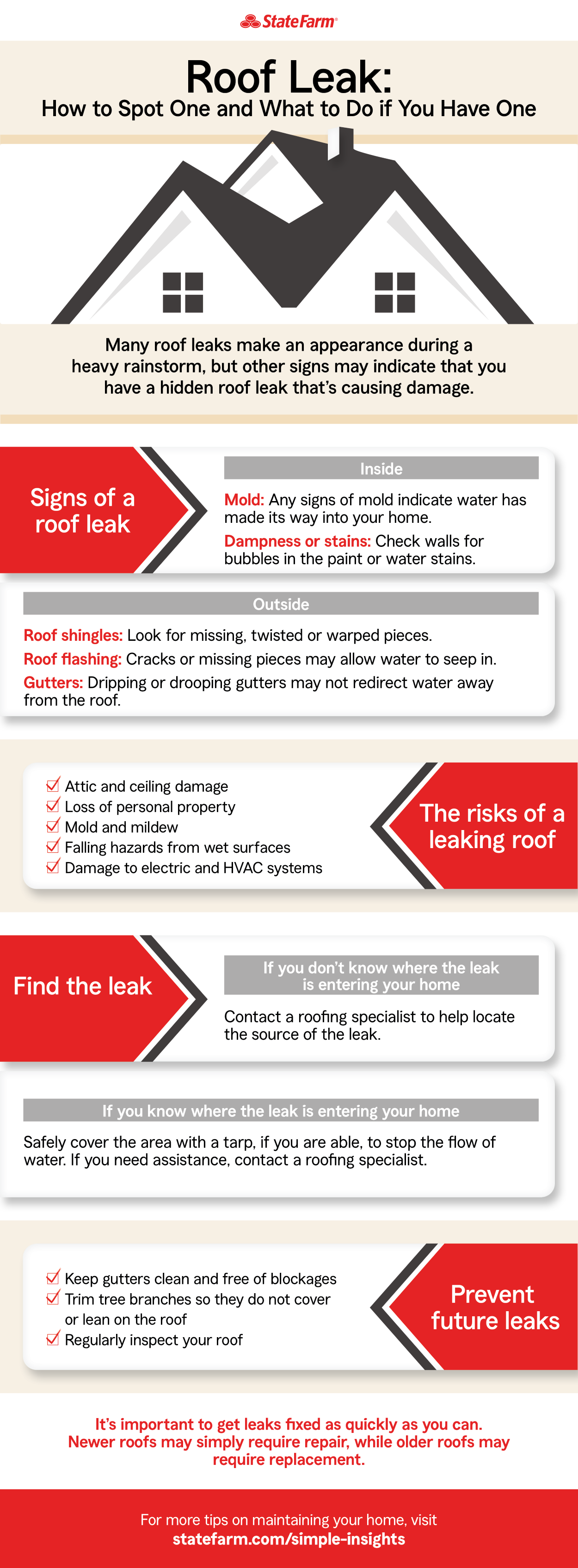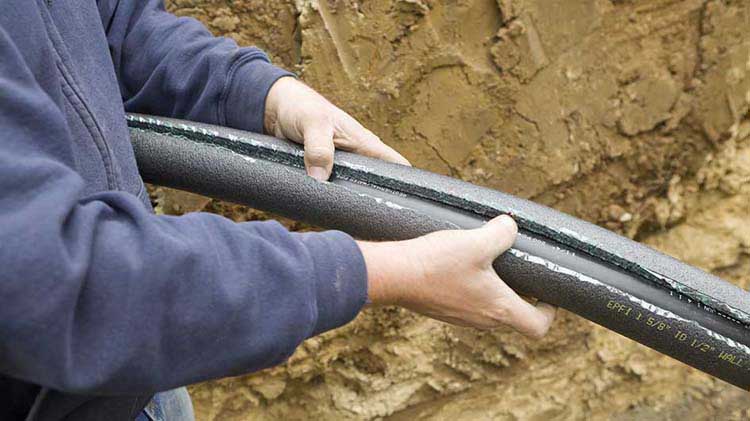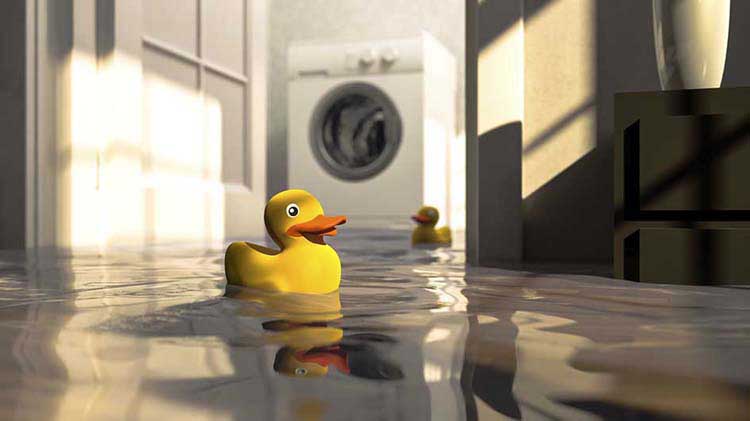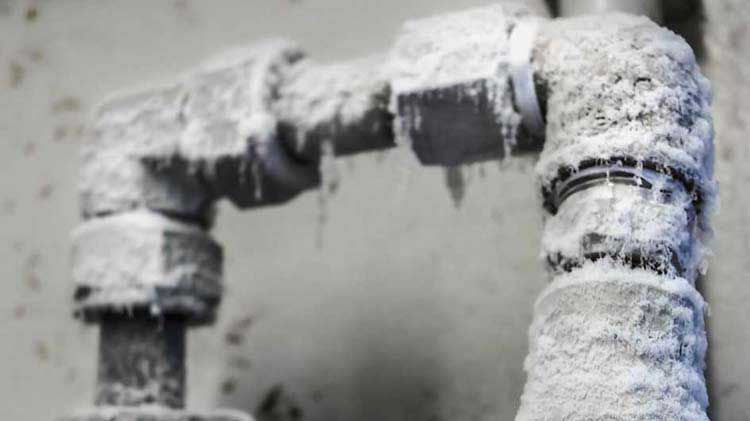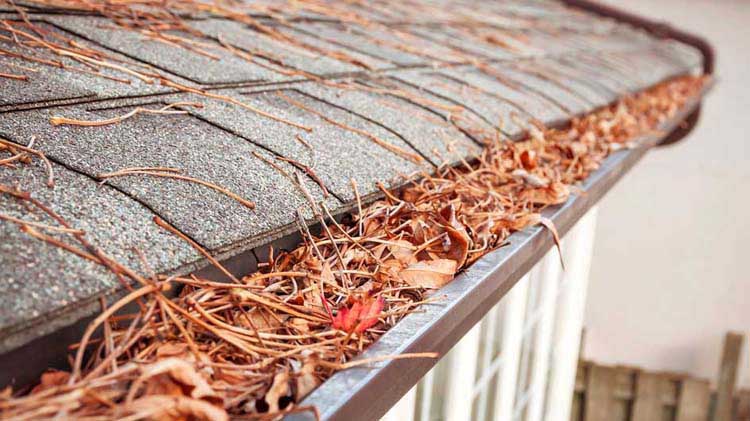How to spot a roof leak and know what to do
What are the signs of a roof leak, and what steps should you take to stop the damage? Here's what to do when you're faced with a leaking roof.
Most homeowners or renters might be able to tell you the age of their roof, but beyond that, there's uncertainty. Take a roof leak, for example: The first sign of a leaking roof for many is a stain on a ceiling or wall. Fortunately, there are some clear steps you can take to learn how to find a roof leak and help stop damage before it gets worse.
For example, a simple visual inspection of roof shingles — while standing safely on the ground — can help you identify spots where the roof might be wearing unevenly or where shingles are missing or damaged. Gutters and downspouts should be in good condition and kept free of debris that may prevent water from draining off the roof.
What are the early warning signs that you have a roof leak, and what should you do if you discover a leaking roof? Many roof leaks make an appearance during a heavy rainstorm, but other signs may indicate that you have a hidden roof leak that's causing damage.
Signs of a roof leak
Inside
- Mold: Any signs of mold or mildew may indicate moisture is entering the home.
- Dampness or stains: Check ceilings and walls for bubbles in the paint or water stains.
Outside (use binoculars to inspect the roof from the ground)
- Roof shingles: Look for missing, torn, cracked, curling or damaged shingles.
- Roof flashing: Cracks in the caulk or missing pieces may allow water to seep in.
- Gutters: Are sections of the gutters drooping? Does the gutter overflow when it rains?
The risks of a leaking roof
- Damage to the interior of your home and your personal property.
- Falling hazards from wet, slippery surfaces.
Find the leak
Whether or not you know where the leak is entering your home, contact a roofing specialist to help you find the specific source of the leak and make temporary repairs.
Prevent future leaks
- It's important to have your roof routinely inspected and maintained by a professional roofing contractor.
- Keep tree limbs cut back to prevent them from touching the roofing surface.
- When leaks occur, get them fixed as quickly as you can — newer roofs may simply require repair; older roofs may require replacement.
Check out these simple insights for more tips on maintaining your home.
Many roof leaks make an appearance during a heavy rainstorm, but other signs may indicate that you have a hidden roof leak that's causing damage.
Signs of a roof leak
Inside
- Mold: Any signs of mold or mildew may indicate moisture is entering the home.
- Dampness or stains: Check ceilings and walls for bubbles in the paint or water stains.
Outside
- Roof shingles: Look for missing, twisted or warped pieces.
- Roof flashing: Cracks or missing pieces may allow water to seep in.
- Gutters: Dripping or drooping gutters may not redirect water away from the roof.
The risks of a leaking roof
- Attic and ceiling damage
- Loss of person property
- Mold and mildew
- Falling hazards from wet surfaces
- Damage to electric and HVAC systems
Find the leak
If you don't know where the leak is entering your home: Contact a roofing specialist to help locate the source of the leak.
If you know where the leak is entering your home: Safely cover the area with a tarp, if you are able, to stop the flow of water. If you need assistance, contact a roofing specialist.
Prevent future leaks
- Keep gutters clean and free of blockages
- Trim tree branches so they do not cover or lean on the roof
- Regularly inspect your roof
It's important to get leaks fixed as quickly as you can. Newer roofs may simply require repair, while older roofs may require replacement.
For more tips on maintaining your home, visit statefarm.com/simple-insights

